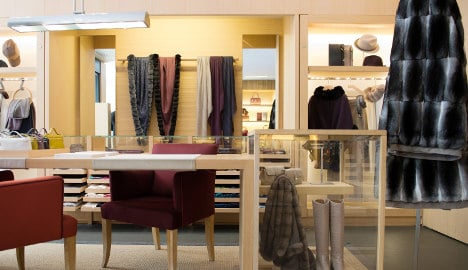Loro Piana, bought by French giant LVMH for 2.0 billion euros ($2.7 billion), is now eyeing further global expansion, Pier Luigi Loro Piana,
chairman and chief executive of the once family-run business, said.
The takeover was no act of betrayal and would help retain jobs as well as develop the company, he insisted.
"The life of a business is not like a football team! We are not taking part in an Italy-France game or against Germany," he said in an interview.
"We are trying to do our best for our company and for Italy," he said.
The business goes back six generations and embodies classical Italian luxury, with its roots in tradition and the community where it started out in the Piedmont region of northern Italy.
It started out in its current form in 1924 in Quarona, a small town at the foot of the Alps.
Specialising in the production of rare textiles such as cashmere, vicuna, merino or lotus flower, it has also expanded into high-end fashion.
LVMH has said it is buying 80 percent of Loro Piana — its most recent in a series of purchases including Bulgari, Fendi and Emilio Pucci.
Kering, another French giant in the sector, also owns the Italian brands Bottega Veneta, Sergio Rossi, Brioni and Pomellato.
These buyouts are part of growing foreign involvement in a variety of Italian business from food and drink to telecoms to the airline industry.
The national press has portrayed the takeovers as a symptom of economic decline. But the 62-year-old Loro Piana, said that the jingoism makes no sense.
The latest case is Spanish group Telefonica's plan to increase its stake in Telecom Italia which contributed to the departure of the chief executive of the Italian firm on Thursday.
Being owned by LVMH will lead to "a more rapid and also maybe more solid development that would not have been possible for a company like Loro Piana on its own," he said.
"Markets that were not an immediate priority for us can become ones that are since there will be more resources available," he said.
Not that the company, which employs 2,500 people, has much to complain about, he said.
The group is "in complete contrast with the national economy", which has been in recession for two years.
Turnover was €627 million ($847 million) in 2012 and is due to increase to €700 million this year.
"I don't think LVMH will want to significantly change the strategy of Loro Piana and I don't think that they would have bought it otherwise," he said.
Loro Piana and his brother Sergio, 65, will hold on to their executive positions, which they rotate every three years, as well as 20 percent of capital.
"If Loro Piana develops further in the years to come, we will have made the right choice for Italy, for ourselves and for the LVMH group," he said.
Marco Fortis, a professor of economics at Cattolica university in Milan said companies that have been taken over like Loro Piana are "major businesses but not big enough to grow more on the global market", particularly in emerging markets.
"In Italy, we are always complaining about foreigners buying companies" — even though it can also work the other way round, he said.
The strategy of Loro Piana and other luxury companies that have been bought by LVMH or Kering is actually "mutually advantageous", he explained.
France "has few businesses but a lot of capital and Italy has a lot of businesses but little capital", he said.
In any case, there will always be new generations of brands rising, he said, giving the example of fashion businesses Brunello Cucinelli, Cruciani or Lardini.
"There are always new, youth brands in the luxury sector that will be big brands in the future," he said.




 Please whitelist us to continue reading.
Please whitelist us to continue reading.
Member comments